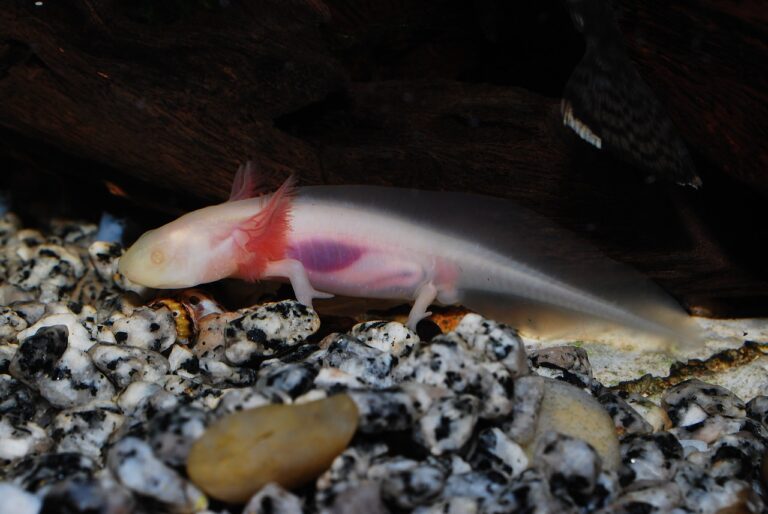Unless you were involved in an unfortunate accident or were born with a congenital condition, namely polydactyly (extra fingers or toes) or symbrachydactyly (fewer than the average number of digits), you have five fingers on each hand. It makes you wonder: Why do we have five fingers? Why not six or four? Let’s break it down.
The average number of digits is 20 per human. That’s also the average number of digits for most other mammals. Amphibians and reptiles tend to be a bit different, but no tetrapod (animals with four limbs) has more than five digits on their hands or feet. And that all started about 340 to 360 million years ago.

The ancient reason why we have five fingers
Fingers and toes didn’t evolve on land. They evolved with the rest of early life in the ocean as fins. Fossil records suggest the earliest fingers were around before animals made their way onto land.
From fish to amphibians, the fins began to take on a more finger-like appearance, but evolution didn’t stop her digit design with those prehistoric salamanders, and that’s probably a good thing. Those first amphibians to crawl from the primordial aquatic world had a high number of fingers – seven or eight or even more. More than we can count each hand. There was one amphibian, however, who had five fingers at the end of his slippery little limbs, and, by a stroke of luck, he would become the common ancestor of all tetrapods. Ourselves included.
Scientific American says that the great prehistoric digit reduction, from the many aquatic fins to the five fingers that survived epochs to reach us, coincides with the evolution of joints made for walking on land. And that’s what this all comes down to: evolution.
Throughout time, finger counts have continued to lower for some evolutionary lines. Experts suggest there’s an evolutionary advantage to having fewer digits, too – for example, birds and dinosaurs with fewer toes run faster – and the number of fingers will likely continue to lower. It won’t, however, go up.

The genetic reason why we have five fingers and why that's the maximum
Outside of a random mutation, no vertebrate on Earth can grow more than five unique digits per extremity. This has to do with a set of encoded genes from that early amphibian ancestor we mentioned earlier. The Hox gene and the digital buds on developing embryos work together to prevent excessive digits, as Clifford J. Tabin explains in Development, a journal of developmental biology.
The Hox gene tells the embryonic buds to become fingers or toes, and thanks to our exponentially-great-grandfather axolotl, tetrapods only have five digital buds at the end of their developing limbs. Which means you couldn’t grown a sixth genetically unique finger if you tried.
It might seem counterintuitive, but even cases of polydactyly don’t show more than five genetically different fingers per hand. The extra digits are copies produced by the five digital buds. They’re clones. It’s like having multiple identical pointer fingers.

But why do we have five finger specifically?
This is the big question, isn’t it? We know how we ended up with five fingers, but that doesn’t really explain the “why,” which is simply evolutionary advantage.
Fingers and toes are more advantageous on land than fins. They provided grip for climbing and stability while walking. But why do we have five fingers specifically? Unfortunately, we’re not entirely sure what advantage five fingers gives over four or six, but we do know that evolution has the answers.
As far as we know, there hasn’t been a single case of evolution giving a vertebrate more digits than its ancestors. In fact, adaptation tends to take digits away, suggesting fewer fingers are more advantageous to survival.
Join the Obscurix Newsletter!

Humans will probably lose more fingers with evolution
Animals who have fewer than five fingers seem to have lost their extra digits because they were unnecessary. So the most likely explanation – at least the simplest one – is that having the minimum number of digits needed for your hand and wrist structure is a benefit in itself.
The more appendages you have dangling in front of predators or the more toes you have to snag on debris, the more issues. Plus, fewer digits can be stronger digits since more muscular resources can be allocated to them. There may also be other benefits that haven’t been researched yet, such as limiting neurological resources spent on running more moving parts.
Regardless of the cause, evolution will likely take us down to four or fewer fingers someday as well. No time in the near future, mind you, but if we survive long enough as a species, it’ll probably happen.
At the end of the day, evidence suggests it was simply a stroke of evolutionary luck that limited us and other tetrapods to five fingers. And it’ll be evolution who decides how many fingers we end up with as our species evolves. Whatever is most advantageous to our survival.







